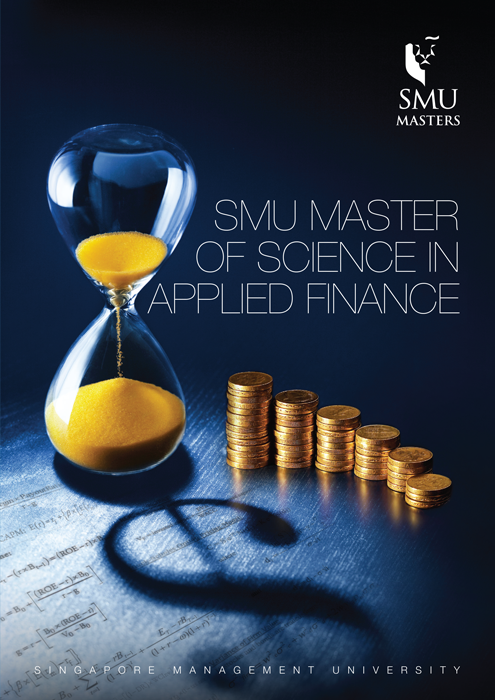
In recent years, fintech start-ups have been usurping traditional banks when it comes to — pardon the pun — banking on technology to increase their value. The year 2020, however, changed all that. Financial institutions, long known for their reluctance to be part of the digital revolution, were forced by the pandemic to rethink the way they work. As the self-styled futurist and founder of now-defunct mobile bank Moven, Brett King, once said: "Banking has to work when and where you need it. The best advice and the best service in financial services happens in real-time and is based on customer behaviour, using principles of big data, mobility and gamification.”
Although, Moven called it quits in 2020, traditional banks can no longer ignore the importance of data in improving operations and increasing their value. Today, banks harness the power of data to boost customer experience, and enhance cybersecurity, especially as digital banking transactions have become more ubiquitous, and personalise their offerings and advice to each client. According to a 2021 report on the use of big data in central banks, 80 per cent of the responding central banks disclosed their use of big data regularly, versus only a third of respondents in 2015.
We speak with SMU Adjunct Professor and Head of Customer Analytics, Global Commercial Banking, OCBC, Wong Tiong Kiat on four ways banks are relying on big data to better engage with their customers and understand their needs. Any views or opinions represented in this article are personal and belong solely to the owner and do not represent those of people, institutions or organizations that the owner may or may not be associated with in professional or personal capacity, unless explicitly stated.
1. Realise the power of untapped data
There is a saying, notes Tiong Kiat, that “data is the new oil”, which alludes to how oil is only useful and valuable after it has been extracted from an underground reservoir and refined. Similarly, data can only be utilised and monetised when it is “transformed from its potential capacity to its realised capacity”. Furthermore, there are typically two types of data that “don’t lie”, one is transactional data and the other is mobility data.
“You only buy things that you like or need, or you only visit places that you want to go to,” explains Tiong Kiat.
“Such data represents your true self. Banks have the advantage of capturing the transactional data while telecommunications operators have the advantage of capturing the mobility data of an individual.”
Therefore, banks have the advantage of accessing a huge reservoir of untapped transactional data. Coupled with the high level of trust between customers and established financial institutions, such vital insights provide banks with an edge over smaller fintech companies.
“Banks already realised the power of such untapped data and are aggressively transforming and exploiting these potential capacities within the data reservoir,” observes Tiong Kiat.
“With the right data insights, offerings from banks can be hyper-personalised, enabling the banking experience to become seamless, fast and easy based on a deeper understanding of customers.”
2. Leverage on data to enhance your value proposition
Primarily, banks have been leveraging data to understand the needs of their customers over their lifecycles by providing personalised services, relevant advice and bespoke financial strategies. Moreover, banks are able to provide greater assurance and peace of mind to their customers by monitoring potential fraudulent transactions or activities in their accounts through the use of data analytics.
Today, banks can interpret their customer demographic and transactional trends through big data analysis, and craft relevant value-added products, or cross-sell their services to provide a comprehensive solution to their client’s ever-changing requirements.
And while banks have gradually been adopting big data in the past few years, Covid-19 has accelerated the digitalisation of banks and their customers’ financial journey. This rapid transformation of the financial industry has led to a dramatic growth in the size of data reservoirs which, in turn, “helps to sharpen data exploitation strategies and lead to better outcomes”, says Tiong Kiat.
3. Balance automation with a human touch
Now that extensive and high-quality data is readily available to fund managers and financial institutions, there has been a corresponding rise in robo-advisories that use algorithms to execute investment decisions. However, Tiong Kiat points out that such robo-advisory financial platforms face the challenge of gaining investors’ trust, especially when it comes to investments of higher value.
Banks are in a better position to ensure the strict confidentiality of their customers, being governed by strict regulatory requirements from the central banks, including the use of AIDA (Artificial Intelligence Data Analytics). He also suggests how “banking as a service”, an approach adopted by licensed banks to integrate their digital banking services directly into the products of other non-bank businesses, can be a way for banks to maintain a balance between the harnessing of powerful data and wielding a personal touch when it comes to customer engagement and service.
“Most robo-advisories leverage on artificial intelligence (AI),” shares Tiong Kiat.
“Given that such platforms are still not mature, it will likely be a while before robo-advisors can do the jobs of human fund managers completely. However, with the advancement of computing power and AI technology, such a possibility may materialise in the foreseeable future.”
4. Embrace tech as an enabler for change
As with all other industries disrupted by the pandemic, digital transformation is unavoidable for the banking sector in order to future-proof its business, customer experience and operational efficiency. By increasing automation and empowering customers with capabilities to manage their finances on the go, technology is an enabler to connect deeply with a bank’s client base. The rise of big data also provides the opportunity to reimagine business models, by optimising workflow and refining operational frameworks.
“Banks can only leverage data analytics to better serve their customers with technological advancements,” says Tiong Kiat. “For example, customers’ expectations have changed over the years. They now expect a simple, fast and seamless banking experience. Thus, we need technology to elevate the customer journey and meet the expectations of today’s digitally-savvy customer.”
Speak to our Admissions Advisors
Lee Kong Chian School of Business
Postgraduate Admissions
Singapore Management University
Lee Kong Chian School of Business
Graduate Programmes Office, Level 4
50 Stamford Road, Singapore 178899
Tel: +65 6828 0882
Join us at the upcoming events
Singapore Management University
50 Stamford Road Singapore 178899
Singapore
